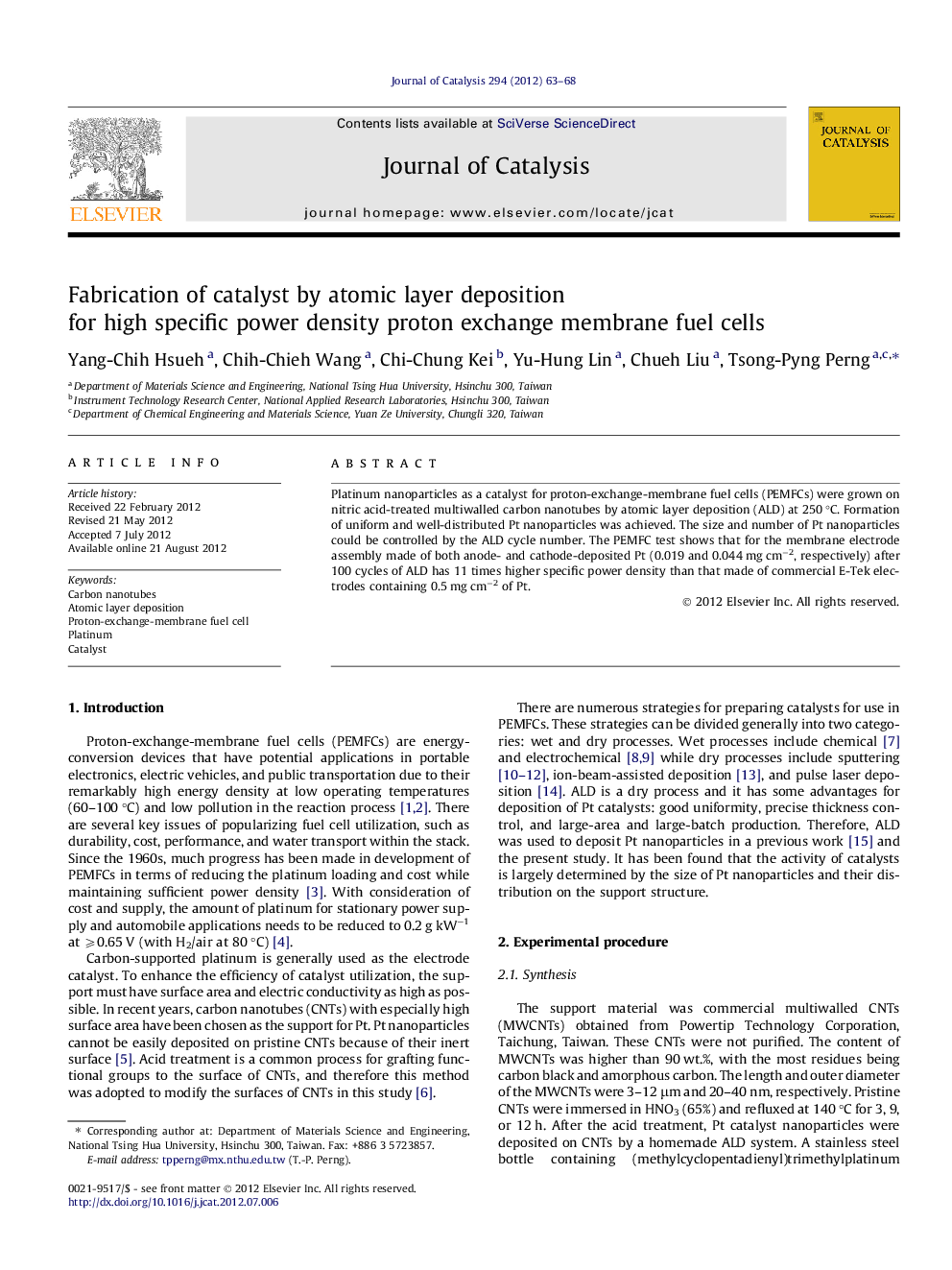| Article ID | Journal | Published Year | Pages | File Type |
|---|---|---|---|---|
| 61381 | Journal of Catalysis | 2012 | 6 Pages |
Platinum nanoparticles as a catalyst for proton-exchange-membrane fuel cells (PEMFCs) were grown on nitric acid-treated multiwalled carbon nanotubes by atomic layer deposition (ALD) at 250 °C. Formation of uniform and well-distributed Pt nanoparticles was achieved. The size and number of Pt nanoparticles could be controlled by the ALD cycle number. The PEMFC test shows that for the membrane electrode assembly made of both anode- and cathode-deposited Pt (0.019 and 0.044 mg cm−2, respectively) after 100 cycles of ALD has 11 times higher specific power density than that made of commercial E-Tek electrodes containing 0.5 mg cm−2 of Pt.
Graphical abstractPt nanoparticles were deposited on CNTs by ALD. The size and loading of Pt could be well controlled. The specific power density of homemade MEA was eleven times higher than that of commercial one.Figure optionsDownload full-size imageDownload high-quality image (138 K)Download as PowerPoint slideHighlights► Pt nanoparticle size is very uniform and the particles are well dispersed on the CNTs. ► Pt particle size and loading can be directly controlled by the cycle number of ALD. ► Specific power density of home-made MEA is eleven times higher than that of commercial one. ►The usage of ALD for Pt on CNTs could effectively reduce Pt loading for PEMFC.
